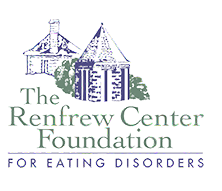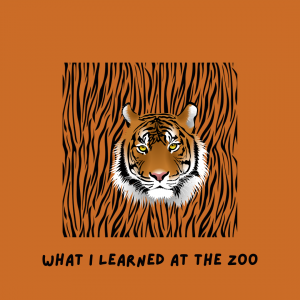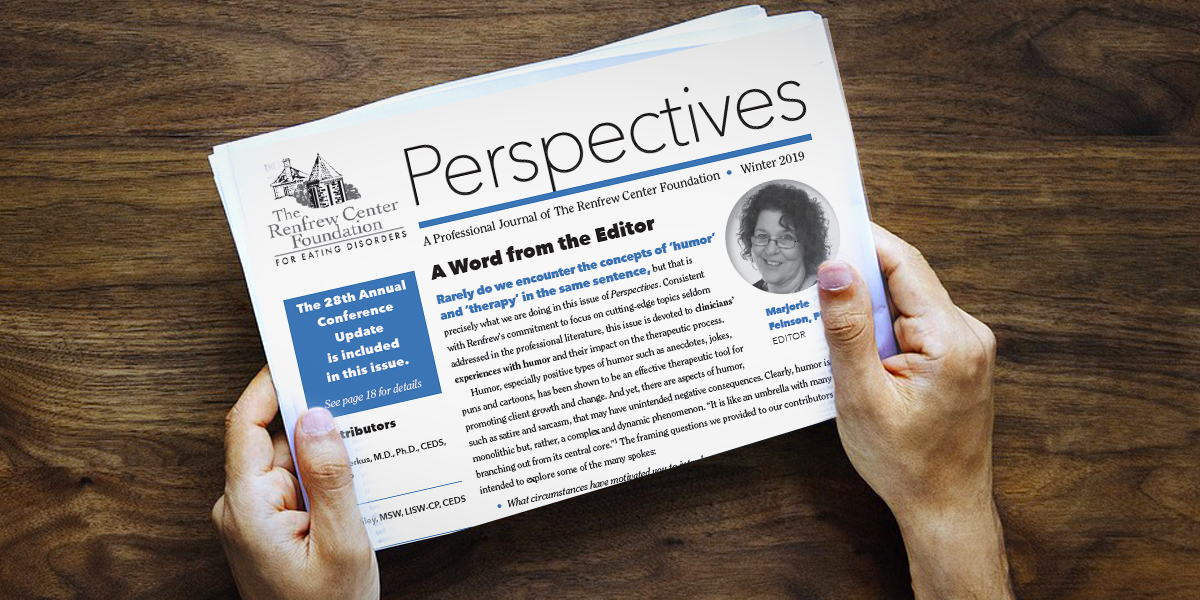(Article originally published in Perspectives: A Professional Journal of The Renfrew Center Foundation, 2019 Edition)
“What did we learn from Freud? If it’s not one thing, it’s your mother.”
– Robin Williams
“What on earth went on in your group tonight?” my husband asks.
We are having dinner and he is referring to my binge-eating group that’s met for sixteen years on Tuesday nights at 5:30 pm. “It sounded like you were having a hilarious time,” he said. “What was so funny?”
My office is in our Manhattan apartment and, although two closed doors separate my therapy office from our living space, his curiosity was piqued by what he described as “raucous laughter.” He was correct. Notwithstanding the fact that the group had initially coalesced that evening around a dark and dreary theme, we had ended a somber group with everyone laughing. It was a humorous quip I made that flipped the mood.
The therapeutic use of humor is not a new idea. Sigmund Freud saw humor as a means of expressing unconscious desires and fears. Viktor Frankel, a holocaust survivor, suggested that humor has the capacity to lift the human experience above suffering. An old supervisor of mine recommended I help clients see their life through the eyes of a cartoon character to bring levity to life’s hardships.
So join me in my office as we examine the healing power of humor.
Back in 2002 when our binge-eating group began, we focused, for the most part, on over-eating. What were the emotional issues that triggered binge eating? As members became less symptomatic and developed deeper levels of self-awareness, trust and intimacy, triggers and self-regulation strategies held less of a center stage.
This group session had begun with Marie, age 75, talking about her husband Jack’s deteriorating health. Jack, diagnosed with Parkinson’s disease had suffered a terrible fall. A broken shoulder and long rehab followed his hospitalization. Marie was already worn out. Now, he faced Alzheimer’s. “How are you managing as a caregiver?” I asked Marie, shifting the focus from Jack back to her. She shook her long blond hair. “Often I’m kind and gentle but sometimes, when I’ve had it, I become a bitch—or even worse— a witch.”
Group members offered words of empathy: care-taking family members was a familiar theme. Three of the six people present that Tuesday evening had lost parents during the sixteen years we had met and one had a chronically ill spouse. I had shared some of my own trials as a caregiver to my mother, who had struggled with Parkinson’s disease for a decade before her death, six years prior to the present meeting.
Next, Eloise, a tall brunette also in her mid-seventies, gave an update on her cancer treatment. She was drained and exhausted from the chemo. Thankfully she wasn’t binging. Cancer was another topic familiar to the group. Sam, a 67- year-old beloved group member had died a decade earlier from metastasized lung cancer.
76-year-old Ben spoke next about the retirement package he’d been offered by his accounting firm. “The package isn’t bad but retirement? I don’t have a lot of hobbies, except over-eating,” he said. The group laughed. “Really, work has consumed me for decades. I’m going to have to revamp my life,” he said grimly.
“Being useless has never been my M.O.” He sighed. “Now what?”
Minutes before the group was to end, Marie spoke up again. “I don’t know what I’d do without you guys. You are all dear to me, and our group is so special.” Her remark triggered others to articulate the support they got from one another.
“Sixteen years… a lot of history,” I commented after listening to the others. The group had journeyed from being composed of mostly 50-year-olds to, now, a group mainly of 70-somethings. Four of the six members present had been in the group since our first meeting sixteen years earlier. “We are moving through life together,” I added.
“I’m 85! —The oldest one here,” said Bonnie. “I think I’m doing pretty well except— I am continually losing names. I run into people I’ve known for years and I remember them, but can’t always remember their names! My memory is fading and it’s scary!” Everyone began speaking at once, sharing memory loss moments- cell phones, eyeglasses, keys, birthdays of loved ones, library books. The group was abuzz.
“This happens to me, too! And I’m only 76!”
“Me too and I’m not even 70”!
“Age is just a number. 85 are the new 65.” More laughter.
Beth, the youngest person in the group spoke up. “Seriously, I hope my mind is like yours when I’m 85,” she told Bonnie. “How many 85-year-olds can drive 300 miles” Ben said, jumping in and referencing Bonnie’s lengthy weekend drives to her daughter’s Vermont home. More supportive endorsements of how well Bonnie was aging followed:
“And you still do you own taxes!”
“You are my role model!”
Bonnie persisted. “You are all so kind, but truly, I hate losing names. It’s embarrassing!” she paused. “And I’m terrified: what’s happening to my mind?”
Then the group was silent.
I paused. Took a deep breath. Then, I gave myself permission to follow my spontaneous urge.
With a straight face, I turned to Bonnie. Then I gazed at the group members, slowly. I made eye contact with everyone. “I’m going to make a promise,” I said seriously. “It’s a commitment. If we are all still here and still meeting ten years from now, I’ll supply the name tags so none of us will be embarrassed when we can’t remember each other’s names.”
Peals of laughter broke out. Of course, I laughed too. When the laughter died down, I said: “What’s in a name, anyway? Maybe it won’t even matter if we remember each other’s names—as long as we can remember each other’s stories. After all, it’s our stories that bind us together.”
Writing this article has offered me the opportunity to reflect on the role of humor in our group. Most of us are aware that laughter releases endorphins, the feel good hormone which reduces tension and stress. Joking with patients and allowing them to feel a kinship can offer a remedy to long-standing frustration, pain and isolation, the issues most people with eating disorders struggle with. Our work is serious, but when we, as therapists, are able to laugh at ourselves and accept the absurdities and unknowable aspect of life, we offer our clients a unique gift.
My humorous quip had its positives: it was certainly a bonding moment. As a group leader, I generally disclose my feelings about what happens in the group, yet, I rarely disclose my personal experiences outside the group. This quip was an unusual “me, too” moment. It leveled the playing field. “Life is tough, aging is hard and unpredictable, and we are all in this together” was my message.
Second, I communicated that it’s ok to verbalize our unknown fears, i.e., what will I be like when I’m a decade older? I normalized the fear of aging.
Third, I communicated that, although aging will inevitably take its toll, we can survive, and thrive. My message was “We will adapt. I will be here for you. At least I will try. I am an anchor.”
In writing this article, I was pushed to question my own motivation. Why did I spontaneously come up with a funny line at the moment I did? What would have happened had I stayed with Bonnie’s concern about memory loss? Did she or others feel dismissed? Upstaged? Did I abandon Bonnie’s concern because the topic personally scares me? Perhaps I had an unconscious need to step away from the dread of deterioration, frailty and uselessness—the topics raised.
As my own questions multiplied I noticed a pit in my stomach, for aging is a topic rarely off my radar. My inbox too often carries the subject line “sad news” and, frequently, I find myself mourning a deceased friend or colleague, perhaps even younger than I am. Conversations with friends are increasingly filled with medical concerns. One good friend typically ends phone conversations with the line, “Don’t buy green bananas.” Another has incorporated a telling phrase as part of her email signature, “The road ahead is shorter than the road behind.” On a more personal note, my husband has been coping with a painful backache and we have been educated by innumerable medical experts to face the truth: back pain, like an assortment of other medical maladies, is increasingly prevalent and predictable as we age. Acceptance is key.
I wondered: did I make a humorous remark as a way of avoiding my own feelings of grief, anxiety and frustration around aging? Was my quip a mistake?
Fortunately in life and in therapy, mistakes are always opportunities for exploration and repair.
The following group session offered me an easy segue for investigation. Marie had arrived wearing a heart monitor. A “scary incident” had sent her to her cardiologist. Once again, we were plunged into the world of aging anxieties.
I had an opening and I took it.
I asked if there was more that needed to be said about Bonnie’s concern with memory loss. When no one spoke up, I made a confession: I might have unconsciously sidestepped this daunting topic. While no one admitted to feeling slighted or put off, I was glad to have planted a seed: therapists, as well as patients, often have a hard time sitting with what is truly painful and frightening.
Until recently, I hadn’t spent much time thinking about the value of humor in healing. Writing this article pushed me to think about my work through a new lens. One principle that has guided my work forever is a quote from Psalms, “Joy shared, twice the gain, sorrow shared, half the pain”. Humor is a pathway into pain. It allows us to share it all. A joke well told can lighten the load, facilitate bonding and humanize us as therapists. It can communicate, as Sullivan taught, “We are all simply human.”
(Article originally published in Perspectives: A Professional Journal of The Renfrew Center Foundation, 2019 Edition)


 Once upon a time, there was a beautiful but dilapidated zoo in a large metropolitan city. It was in a state of despair, in dire need of renovation. The cages were rusted, the habitats for each species were too small. Animal advocates rallied for help.
Once upon a time, there was a beautiful but dilapidated zoo in a large metropolitan city. It was in a state of despair, in dire need of renovation. The cages were rusted, the habitats for each species were too small. Animal advocates rallied for help.




